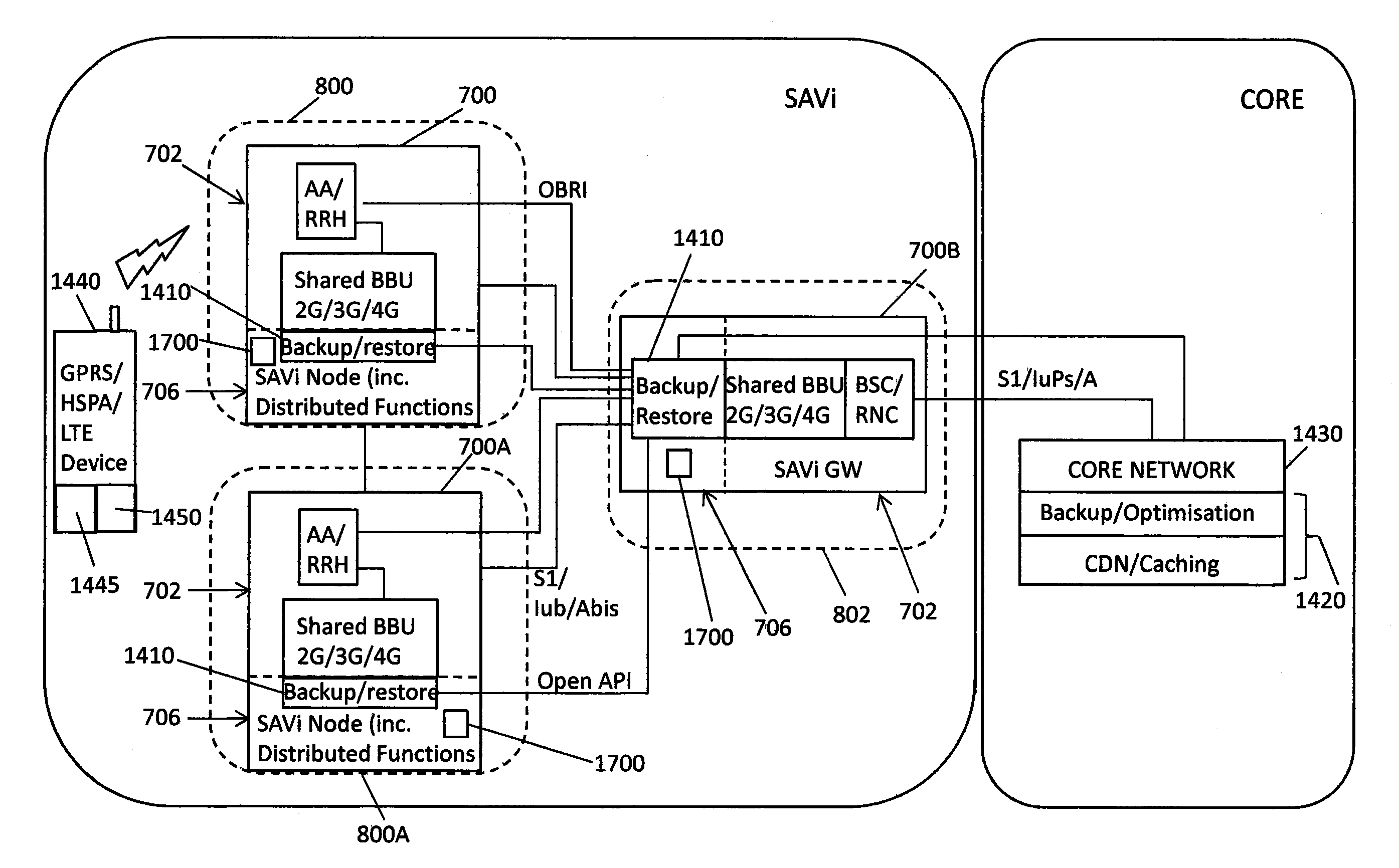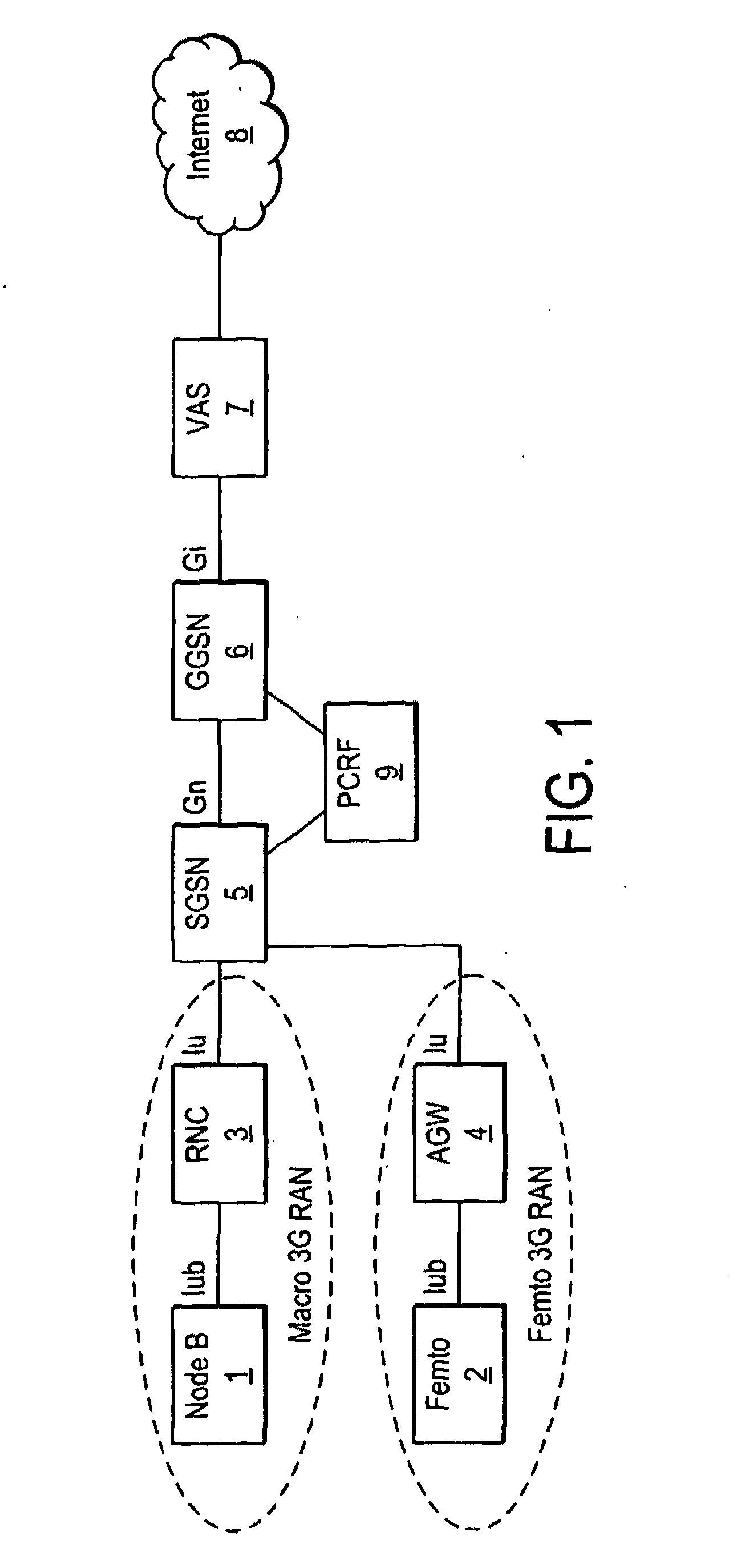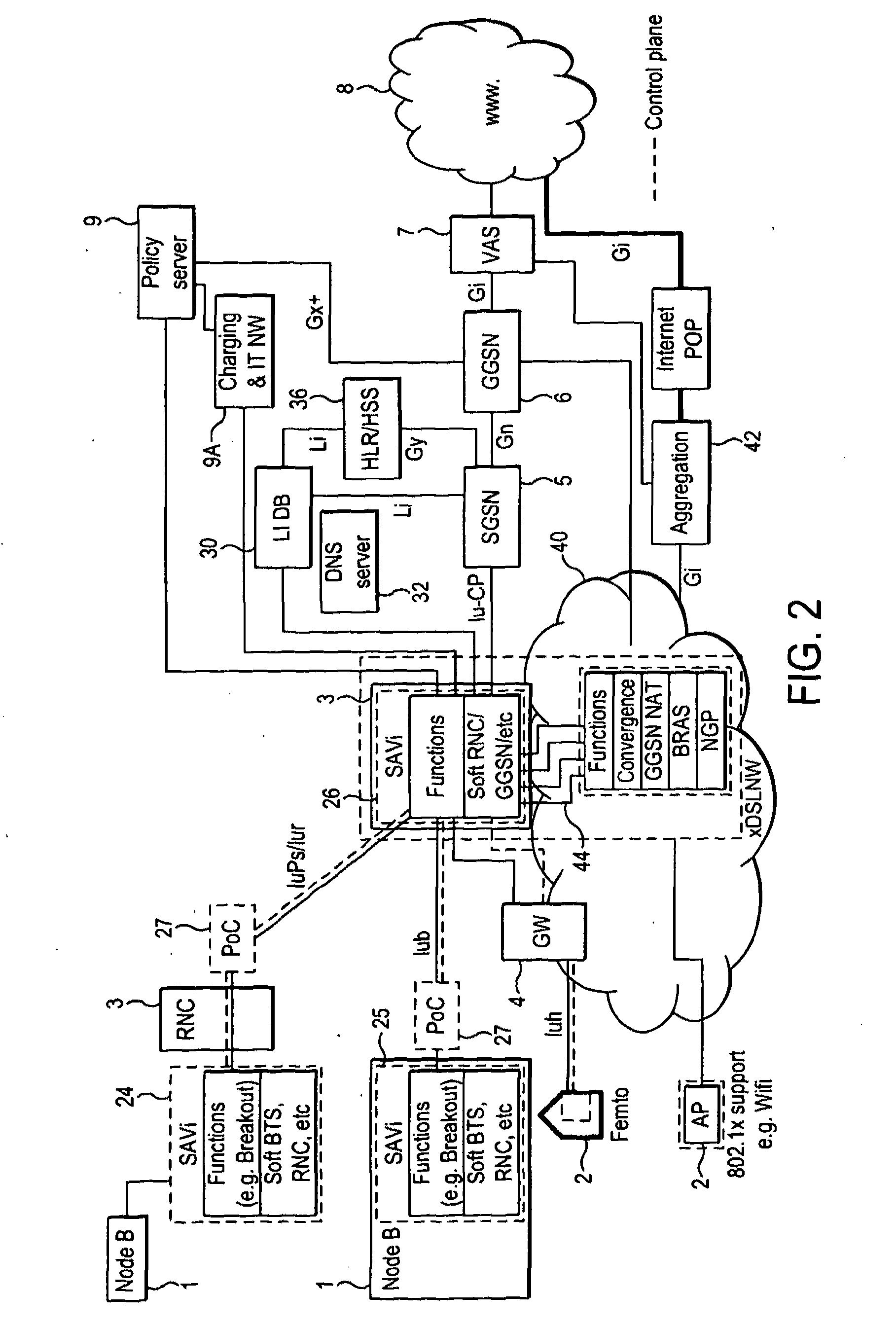[0022]The controller may be operable to gauge the radio conditions by predicting the radio conditions available to the mobile terminals. The controller may build and maintain a
record of radio quality across a coverage area of the network (a
cell in the embodiment), and may use this
record to predict the radio conditions available to the mobile terminals within that coverage area. The
record may be in the form of a map of the coverage area, indicating which areas of the coverage area provide which qualities of
radio coverage. The controller may calculate the present location and / or velocity of the mobile terminal and may control the transmission of data in dependence thereon. In the embodiment the controller uses the record of radio quality across the coverage area and the calculated present location and velocity of one of the mobile terminals to estimate the radio conditions available to that mobile terminal at a future location and to control the transmission of data between the
radio access network and that mobile terminal at the calculated location in dependence thereon. That is, the controller may calculate the present location of the mobile terminal. If the velocity of the mobile terminal is also calculated, this allows the position of the mobile terminal at a time in the future to be estimated. By consulting the record of radio quality across the coverage area, the controller can determine the radio conditions at an estimated future location of the mobile terminal. The controller may increase the amount of data transmitted at the calculated (present) location of the mobile terminal if the radio conditions at the estimated future location predicted to be below a quality threshold. Alternatively or additionally, the controller may decrease the amount of data transmitted at that calculated (present) location of the mobile terminal if the radio conditions at the future location are predicted to be above a quality threshold. For example, in the embodiment, if the controller determines that the mobile terminal is moving from a present location in which radio conditions are relatively poor to a future location in which the radio conditions are relatively good, the amount of data transmitted to the mobile terminal at the present location may be reduced, and the amount of data that is transmitted at the future location is increased. Conversely, if the present radio conditions are assessed to be relatively good, and the future radio conditions are predicted to be relatively poor, then additional data may be transmitted to the mobile terminal at the present location, and less or no data may be transmitted at the predicted future location. Advantageously, the mobile terminal includes a buffer or other memory for storing this received data. According to the embodiment, relatively more data may be transmitted to the buffer when the mobile terminal experiences good radio conditions then when the mobile terminal experience is poor radio conditions. This is advantageous because the transmission of data when the mobile terminal experiences good radio conditions is much more efficient in terms of bandwidth used.
[0112]The controller may be operable to provide a cost quote to a user or an application before provision of network resources, such as delivery of data. The application may be hosted by the controller. The application may provide services to the user. The cost quote may be communicated to the hosted application over an
open API of the controller, allowing a standardised interface between the application and other functionality of the controller, such as network functionality and soft nodes providing
baseband functions. One or more quotes may be provided for the provision of network resources. For example, a quote for a higher cost may be provided for the transmission of data earlier or at a fast rate than for the transmission of data later or at a slower rate. The user or application may select the quote that best suits its needs. The data is then transmitted at an appropriate rate according to the selected quote. In an embodiment, the
data transmission only commences after a cost quote has been accepted by the user or the application. The cost quote or quotes may be based on the measurements of radio conditions for the mobile terminal that is to receive the data and the network load applicable to the
data transmission. These measurements may be performed in real-time, or these measurements may be based on statistical or historical information—which allows the current network or
system load to be predicted, based on information, for example, about the geographical position of the mobile terminal or the
time of day or date. The cost quote may include a set of variable performances (e.g.,
throughput,
delay, percent of dropped data packets etc and their associated costs). In one arrangement, the application provides an indication of the maximum cost associated with a required transaction involving the use of network resources, and the controller receives this information of maximum cost and returns a delivery quote which indicates the offered
delivery performance that can be provided corresponding to that quote. Thus, if the maximum cost is relatively high, the delivery quote may be high
delivery performance (e.g.,
high data rate), and conversely if the maximum cost indication is low, the offered
delivery performance may be lower (e.g., a lower
data rate).
 Login to View More
Login to View More  Login to View More
Login to View More 


